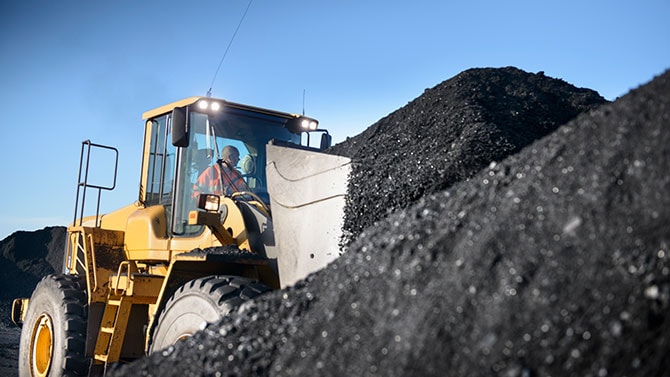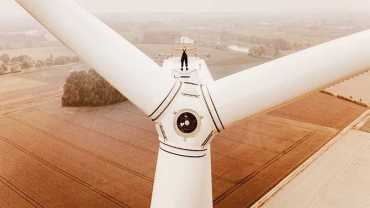
Customs Aspects of the Carbon Border Adjustment Mechanism
13/08/21
On 14 July 2021 the European Commission published its proposal for a Carbon Border Adjustment Mechanism (CBAM).
The CBAM will introduce a levy on the import of certain goods. As the CBAM will be a levy on the imports of goods, it is closely linked to the customs processes of the EU.
We will take a closer look at the link between the CBAM and the EU customs processes. More information on the background, scope and application of the CBAM can be found via the following LINK.

Is this relevant for your business?
The CBAM aims to address the risk of carbon leakage by introducing an import levy for carbon-intensive sectors equivalent to the carbon pricing for locally produced goods (i.e. the EU Emissions Trading Scheme). The full scope of the CBAM is likely to come into force in 2026. However, the proposed regulation includes a transition period between 2023 and 2026, during which reporting obligations apply.
When your business imports or relies on the import of goods that are in scope of the CBAM (i.e. cement, iron and steel, aluminum, fertilizers and electricity) you should prepare for an increased administrative burden when importing these goods and start implementing processes to comply with this new legislation.
Please read on for further details of the CBAM legislative proposal, the requirement to be an authorised declaration, the use of customs suspension regimes and the determination of the origin of the goods.
Authorized declarant
One major change that the CBAM legislation introduces, is that the products in scope of the CBAM legislation can only be imported by declarants that are authorised by a CBAM authority. This authorised declarant is also responsible for filing an annual declaration of the embedded emissions (CO2, Nitrous Oxide and perfluorocarbons) in the goods imported into the EU .
For companies that have an entity or a PE in the EU, import declarations are typically filed via a broker using direct representation. In such cases, the represented business is the declarant and should obtain the authorisation from the CBAM authority.
Non-EU businesses cannot use direct representation. A broker can only file an import declaration using indirect representation. This means that the broker itself is reported as the declarant and needs a CBAM authorisation when importing the goods in scope. The broker would also need to file the annual CBAM declaration.
While it is possible for brokers to do this on behalf of non-EU businesses, in practice brokers are not always willing to do this; the broker would be fully responsible for the CBAM declaration made to the customs’ authorities.
Non-EU businesses importing goods in scope of the CBAM legislation should review their import process and, if required, set up a local EU business to act as declarant for the import declarations.
Use of customs suspension regimes
The CBAM declaration, which needs to be filed on an annual basis, should mention the emissions that are embedded in the goods imported into the EU. The use of customs suspension regimes influences the amount of emissions that need to be reported, see below:
Inward Processing
When applying Inward Processing, products (typically raw materials) are brought into the EU and are processed (often into different products). The final product that is imported into the EU may not be in scope of the CBAM legislation, while (some of) the raw materials used are in scope.
For example, when steel (which is in scope) is brought into the EU under the Inward Processing regime to produce a car (not in scope) and, subsequently this car is imported.
Where goods are produced under Inward Processing and materials are used that are in scope of the CBAM legislation, the total emissions of the materials in scope need to be reported in the CBAM declaration. This is also the case when the product that is imported (in the example above: the car) is not in scope of the CBAM legislation.
Outward processing
Outward Processing is the opposite of Inward Processing. This regime can be applied where EU goods are exported from the EU and brought to a third country (e.g. UK) for further processing. Where the processed or final product is then imported into the EU, customs duties are only levied over the value added outside the EU.

A similar approach is applied for the CBAM. When importing goods that have previously been placed under the Outward Processing regime (e.g. EU aluminium that is further processed in the UK and then shipped back to the EU), only the emissions of the processing outside the EU need to be reported in the CBAM declaration.
Outward Processing is a suspension regime that is not often used in practice. But, given the impact it may have on the future CBAM declaration, it may be worthwhile exploring whether it may provide a benefit.
Returning goods relief
Goods that have been exported from the EU, but return to the EU within a period of 3 years are considered ‘returning goods’. For these goods an exemption of customs duties applies.
A similar system may exist in the CBAM legislation. Where goods in scope of the CBAM legislation can be characterised as ‘returning goods’, they may be reported separately in the CBAM declaration with zero embedded emissions.
Please note that the main challenge for businesses applying returning goods relief is typically the identification of the goods. Upon (re)importation it needs to be proven that the goods imported are the same as the goods previously exported.
This can be done, for example, with the use of unique serial numbers, but in the case of bulk goods (which the CBAM goods typically will be) this may not be possible.
Where businesses consider that the ‘returning goods’ relief will be aplicable, it is advisable to review the identification process and if required, obtain assurance from the customs’ authorities.
Other customs suspension regimes
Goods should only be reported in the CBAM declaration where they are imported into the EU. This means that goods stored in a bonded warehouse, in transit in the EU or re-exported from the EU do not need to be reported in the CBAM declaration.
Non-preferential origin
The CBAM shall apply to goods that originate in third-countries. A number of European (but non-EU) countries are exempt from the CBAM legislation. For example, where a carbon price has been paid in the country of origin (e.g. a carbon tax was paid in China), the importer is eligible for a reduction in the amount of certificates to be submitted.
With respect to the application of the CBAM, the origin of the goods is determined via the non-preferential rules of origin as defined in EU customs legislation.
These rules stipulate that the country of origin of a product is the country where:
- The goods are wholly obtained (i.e. only one country is involved, for example iron that is mined in China, further processed in China and then exported to the EU);
- Where the production of the goods involves more than one country or territory (e.g. iron mined in China, which is further processed in the USA and then exported to the EU), the country or territory where they underwent their last, substantial stage of manufacture.
Determining the country of origin can be challenging for complex supply chains. This is especially the case for bulk products (e.g. iron or steel) that have mixed origin. For example, when a mix of Chinese and Japanese iron is used to produce iron products. It is therefore important for companies to review their supply chain and identify such situations. Where there is uncertainty, a ruling of the customs authorities can provide assurance.

Reporting obligation during the transitional period
The full scope of the CBAM is likely to enter into force on 1 January 2026. However, the CBAM proposal also includes a transitional period from 2023 to the end of 2025. During this transitional period the CBAM will only apply as a reporting obligation. As such, the requirement for the declarant to be authorised by the CBAM authority and to submit CBAM certificates does not apply until 2026.
The reporting obligation that will apply from 2023 to the end of 2025 requires the declarant to submit a so-called CBAM report on a quarterly basis to the competent authority of the Member State of importation. This must be done no later than one month after the end of each quarter and the report must contain: the total quantity of each imported product, the total of embedded emissions, the total of embedded indirect emissions and the carbon price due in a country of origin for the embedded emissions in the imported goods. Failing to submit this CBAM report will lead to a penalty.
Contact us



















